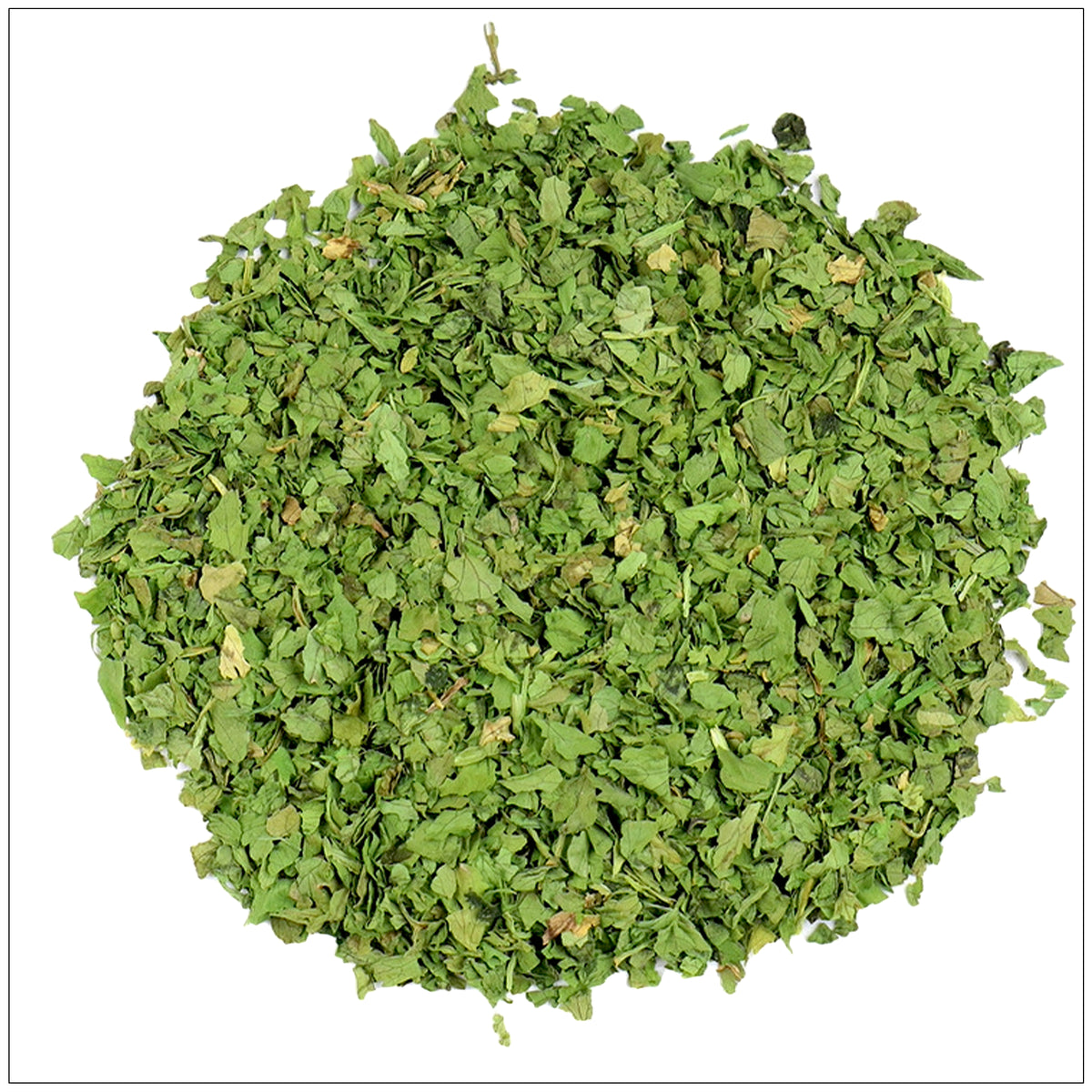

Cilantro Leaf
🚚 Fast and Free Shipping !!!
What is a cilantro leaf?
The fresh leaves of the coriander plant are used to make the herb cilantro (Coriandrum sativum). This plant is in the same family as parsley, and it's also called Chinese parsley and Mexican parsley. In some places, like the U.K., cilantro is called "fresh coriander leaves." The leaves look a lot like flat-leaf parsley and grow on long, soft stems. Coriander spice, which tastes very different from cilantro, is made from the seeds of the plant. The plant's roots can also be eaten and are used in some foods. Since ancient times, people have grown and used cilantro, and now it is grown commercially in almost every country. India, China, the former Soviet Union, Mexico, South America, Central America, and the Caribbean are the places that grow the most cilantro. The United States doesn't grow enough cilantro to meet its own needs, so it imports a lot of this herb.
How do I use cilantro leaf?
Cilantro complements a wide variety of dishes, particularly Thai and Mexican fare. Additionally, it is compatible with preparations that include fish, legumes, cheese, and eggs. Additionally, it complements buttery vegetable sauces and serves as a garnish or condiment for soups and salads.
Cilantro leaf benefits:
Researchers have found that cilantro may help your health by lowering your risk of heart disease, diabetes, obesity, and severe seizures. It may also give you more energy and keep your hair and skin healthy.
◉ Brain Health: Even though more research needs to be done, several studies have linked eating cilantro to a decrease in the symptoms of diseases like Alzheimer's and Parkinson's. In one study, rats given cilantro extract had fewer seizures and less nerve cell damage. In another study, scientists found that when fresh cilantro leaves were added to the diets of lab mice, their memories got better. Skin health: A 2015 study in the Journal of Medicinal Food looked at how well C. sativum extracts shield the skin from ultraviolet B (UVB) radiation damage. They put human skin cells in a dish and skin cells from hairless lab mice in contact with a C. sativum alcohol suspension. The results showed that C. sativum might be able to stop or lessen sun damage to the skin.
◉ Reduced Anxiety: Animal studies have shown that extracts from the cilantro plant are almost as good at reducing anxiety as medicine. Research on human subjects is still necessary.
◉ Rids the Body of Heavy Metals: We can store arsenic, cadmium, aluminum, lead, and mercury in our bodies. These heavy metals can cause heart disease, hormonal imbalances, neurological problems, infertility, and many other health issues. The scientific name for cilantro is "Coriandrum sativum." It has been shown to bind these toxic metals together, which frees them from tissue and makes it easier for the body to get rid of them. In an animal model, Coriandrum sativum was found to significantly reduce the oxidative stress caused by lead. It accelerated the body's elimination of heavy metals, according to another study. In this study, the herb was used to help get rid of heavy metal deposits that wouldn't go away, even after the initial symptoms of an infection had gone away.
Where can I buy cilantro leaves?
Buy Cilantro Leaf from the health food store in the USA, Alive Herbals.
Cilantro leaf information (at a glance):
| Product Name | Cilantro Leaf. |
| Scientific Name | Coriandrum sativum. |
| Country of Origin |
It is native to the Mediterranean. |
| Ingredient |
Cilantro Leaf. |
| Taste & Aroma |
Fresh cilantro: warm, spicy flavor, has a citrusy or soapy or stink-bug scent. |
| Shelf Life & Storage |
Shelf life is about 06 - 24 months. Store it in an airtight container in a cool, dry place and prevent sunlight exposure. |
| Precautions |
We requested that, Before consuming spices, herbs, teas or any kind of natural products, you consult an expert qualified healthcare practitioner or herbalist. |
| Note | This product information has not been appraised by the Food and Drug Administration (FDA). This information is solely intended for educational purposes. |








